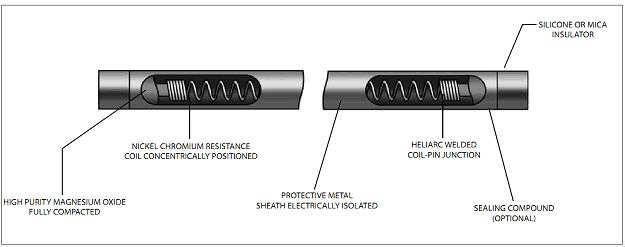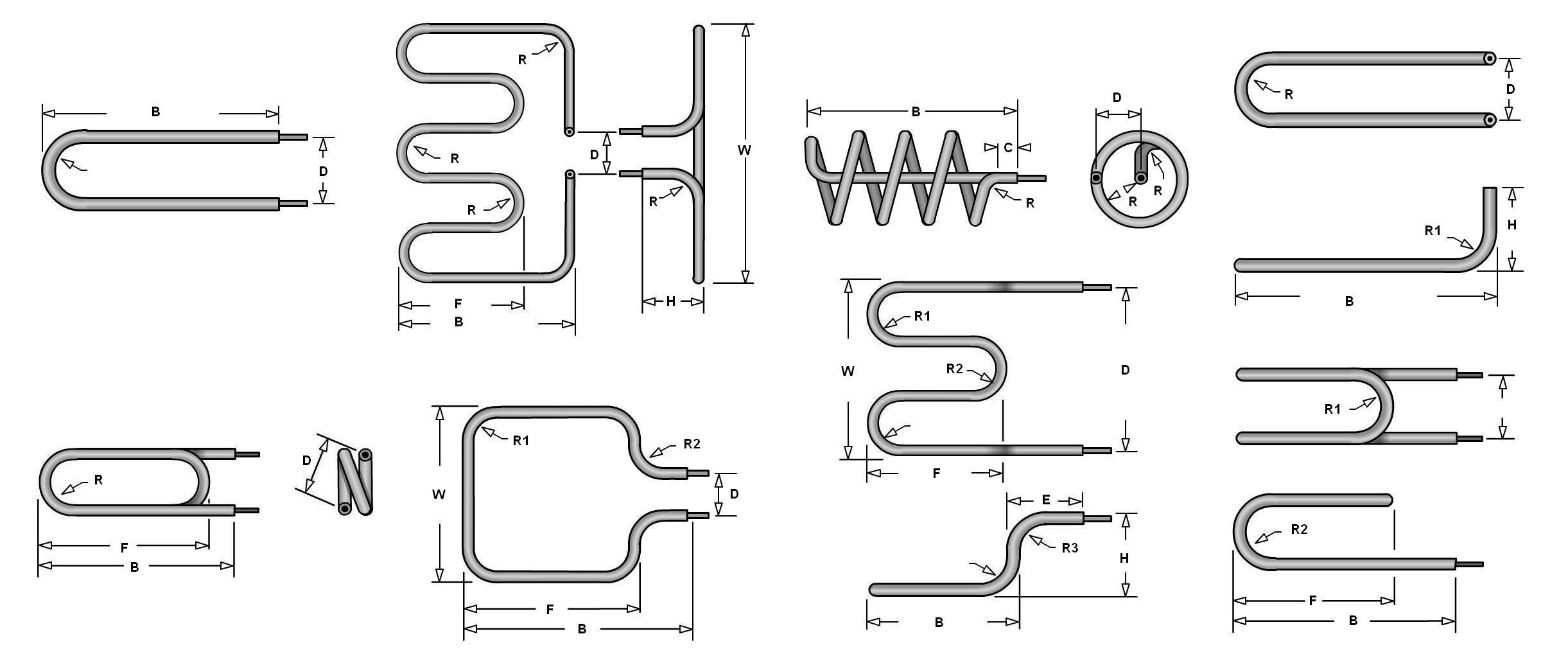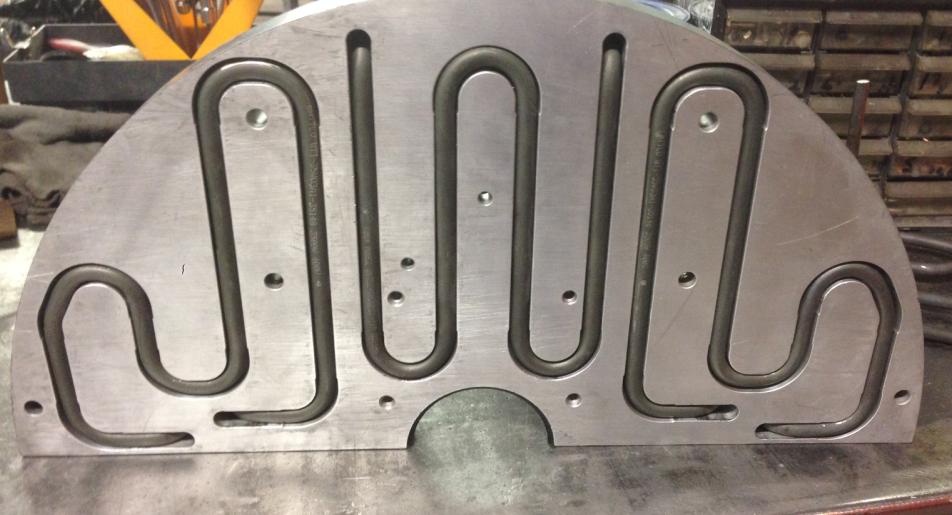Calrod Heaters
What Are Calrod™ Heating Elements?
Calrod heating elements generate dispersed heat by electrical energy conversion. Like many other heating elements, Calrod™ heaters also have an electrical supply running through them that gets converted to heat energy. A Calrod heater has a metallic alloy in its heating apparatus, which has resistance characteristics. This impedes the flow of current and transforms a portion of the energy into heat energy. This heat is passed on via radiation, and may be used to heat the surrounding air or water.
Heat can be transferred in a number of ways, through conduction, radiation and convection. In the case of the Calrod heater, heat is at first radiated to the surroundings, but it can be further dissipated through other methods of convection or conduction as well.
Calrod Heaters Heat Up Quickly And Serve A Variety Of Applications Through This Quality
Calrod heaters are used for a number of purposes and are implemented in many devices. They are highly efficient and they respond very quickly. They do not take too much time to heat up as so many other heating elements do. They are known to just take around 90 to 100 seconds to heat up. Moreover, the Calrod heater responds quickly to changes in temperature and it is known to be durable.
Alloys Used In Calrod Heaters
Calrod heaters are perhaps more accurately described as electric tubular heaters that are used widely for the purpose of producing radiant heat in an application. These heating elements are usually available in stainless steel, and steel alloys, and you will find them in a variety of applications that are used every day, such as kitchen appliances, screw plug heaters, flange heaters, and other heaters
Watt Density for Calrod Heaters
The watt density of Calrod heaters tends to vary a great deal since they are used for air as well as liquid applications. They are also implemented in mold designs for aiding heat transfer to steel or aluminum mold from the Calrod heaters. You can get Calrod elements in many different shapes, and they are also available in four particular standard diameters mentioned in inches: 0.315, 0.375, 0.430 and 0.475.

Fixing Calrod Heaters In Place
Calrod heaters can be set in place easily with common screws, and they have convenient terminals for enabling electrical terminals. When they are used for air applications, they should have a preferable watt density of 25 Watts per square inch. When used for liquid applications, they should have higher densities with a preferable density of 30 WPSI for Glycol applications or 65 WPSI for Water applications. You ought to consult an expert when it comes to selecting the proper wattage you need for your applications.
Internal Structure Of The Heating Element In The Calrod Heater
The heating element of the Calrod heater is made of an alloy that consists of nickel and chromium. This mixture is said to make up an ideal alloy since it tends to have a minimum amount of resistance against heat generation. It also has a melting point that is quite high. This simply means that it will have higher chances of lasting longer, and this is of significant importance because it will be exposed to long term heating. Another brilliant advantage of using this alloy in the heating element is that it can be shaped to fit almost any kind of structure because it is highly malleable.
Calrod Heater Protection
Wire insulation within the Calrod heater is such that it is wrapped in a ceramic filler-binder. It also has a metal overcoat that conceals the element itself from air contact. With ceramic coating, there is more protection given to the element, as it is protected from the oxygen coming into contact with the surrounding air.
Insulation Calrod Heaters
Ceramic materials are chosen for insulation and protection of the Calrod heating elements due to the fact that they conduct the least amount of heat or electricity. Therefore, these materials are ideal for preventing heat or electrical energy from escaping. With this being most suitable for the outer surface, the metal encapsulation protects the element from any possible damage that might occur through mishandling.
Calrod Heating Element Shapes
The word ‘Calrod’ suggests that the heating element is rod-shaped. However, there are Calrod circular heating coils as well that go by the same name. This is because most of these heating elements are shaped like rods, and just a minority of these heating elements will have alternative shapes.

Implementation of the Calrod Heater
Due to the uniform shapes that have been selected, heating is easily and evenly distributed. As a result, they are able to disperse heat energy uniformly. Dispersing heat in this fashion is a demand of many applications, which is what puts the Calrod heater in demand. They are implemented in many small appliances, such as coffee makers, crock pots, toaster ovens, and hot plates. The scope for using these heaters in many other small appliances is immense, and the options for innovation are currently being explored.
Mounting Calrod Heaters
 Calrod heaters can easily be mounted on the sides of walls by using brass bushings with a nut for holding the piece in place. You will need a firm grip in order to manage any vibrations, and the brackets you use will have to match the shape of the Calrod heater being used.
Calrod heaters can easily be mounted on the sides of walls by using brass bushings with a nut for holding the piece in place. You will need a firm grip in order to manage any vibrations, and the brackets you use will have to match the shape of the Calrod heater being used.
When you use Calrod heaters in water, you are likely to discover Calcium deposits that can result in element failure. Therefore, maintenance is necessary in order to ensure that your heater remains operable in water applications. One technique implemented for preventing Calcium deposits includes the use of water softening agents.
Calrod heaters can be implemented in almost any heating applications that need to reach process heating temperatures as high as 750°C. With this capability along with the convenient ability to clamp and immerse the heating instrument in liquid applications, Calrod heaters are truly advantageous. They can also be fixed in ducts for heating air where necessary.
